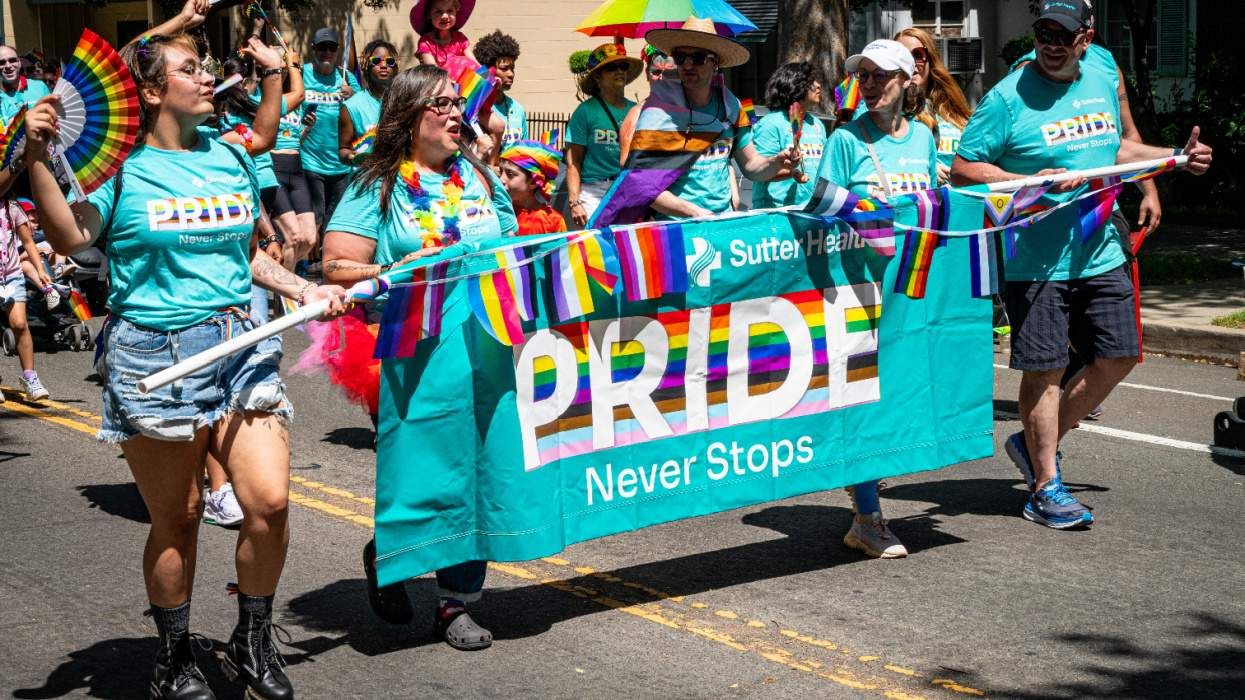After a banner year for marriage equality, a new report finds that same-sex couples are not only marrying in greater numbers, but also seem to be taking their newly legal vows particularly seriously. New data from the Williams Institute suggests that female couples are more likely to get married than male couples, while same-sex couples in general are less likely to get divorced than opposite-sex couples.
The results come from analysis of cumulative data collected by The Williams Institute, an LGBT policy and research think tank housed at the University of California, Los Angeles's School of Law. Williams Distinguished Scholar M.V. Lee Badgett and senior counsel Christy Mallory authored the reports, which offer insight into the marital habits of LGBT Americans, now that residents of 35 states and the District of Columbia can legally tie the knot.
First, the Williams Institute found that female same-sex couples accounted for more of the newly legal unions than male couples. Although female couples accounted for 51 percent of all same-sex couples in the U.S., women comprised 64 percent of the same-sex couples who formalized their relationship with legal recognition in the form of marriage, civil unions, or domestic partnership. That's "a much higher proportion than would be expected," the researchers wrote.
Those same-sex couples who did marry were also less likely to divorce than heterosexual couples, the researchers discovered. The average divorce rate for same-sex couples was just 1.1 percent annually, compared to an annual average of 2 percent divorce rate for heterosexual couples. When data sets were expanded to include dissolutions by same-sex couples in any type of legally recognized relationship (including civil unions and domestic partnerships), the rate increased to 1.6 percent annually -- still lower than the average rate of heterosexual divorces.
"In early 2014, the Williams Institute collected administrative data on marriages, civil unions, and domestic partnerships of same-sex couples in the 23 states that offered these statuses at the time data collection began," the researchers write. "Two states provided data on divorces: New Hampshire and Vermont. Six states provided data on civil union and domestic partnership terminations: California, D.C, New Hampshire, New Jersey, Washington, and Wisconsin."
Overall, the studies reflect what the Williams Institute calls "The Windsor Effect," a reference to the landmark case at the Supreme Court that struck down the so-called Defense of Marriage Act, Windsor v. U.S. Where the number of same-sex marriages had begun to level off in states that had marriage equality before the June 2013 decision in Windsor, the marriage rate in picked up significantly in the wake of the Windsor decision.
"Before 2013, the number of weddings in Connecticut, New Hampshire, and Vermont decreased each year as the pent-up demand for wedding played itself out," wrote researchers. "In 2013, the number of weddings jumped in all three states, reversing that earlier downward trend and suggesting that the Windsor decision may have contributed to more marriages. ... Across the three states, the number of same-sex couples who married nearly doubled from 2012 to 2013."





































































Charlie Kirk DID say stoning gay people was the 'perfect law' — and these other heinous quotes